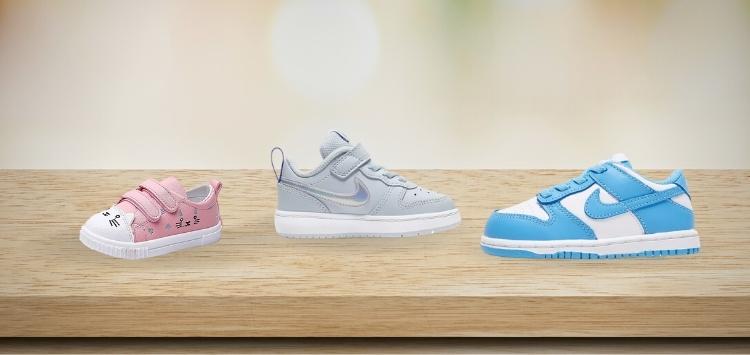When it comes to shoes, the options are often limitless. The variety of available shoe options might sometimes be overwhelming, especially when complex acronyms like GS enter the picture. It further complicates your shoe selection.
So what does GS stand for in shoes? It means Grade School. But it doesn’t mean shoes with a GS label are only for school uniforms. Grade School shoes are sneakers with a thinner and slimmer construction to suit a foot smaller than the average man.
It also provides the ideal fit for women and adolescent girls. Aside from GS, there are several acronyms to help the classification of shoe sizes. We will get into all of them in this article. So, let’s get started!
What Does GS Mean in Shoes?
The term GS was first coined by Nike. And GS in shoes stands for Grade School. Nike introduced the GS category because they saw a demand for men who have smaller foot sizes.
Later on, other brands such as Puma and Adidas adopted the GS categorization. Now adult males whose foot size is smaller than typical can easily buy GS shoes.
GS shoes are only available in sneakers. It has not entered the arena of other shoes, such as formal or flip-flops. And it is commonly used in the Air Jordans collection.
GS Shoe Size Chart
It is important to know the accurate measurement of each GS size. For your convenience, we have converted the measurement into both inches and centimeters.
| GS Size | Length (inch) | Length (centimeter) |
| 3.5Y | 8.9 | 22.5 |
| 4Y | 9.1 | 23 |
| 4.5Y | 9.3 | 23.5 |
| 5Y | 9.3 | 23.5 |
| 5.5Y | 9.4 | 24 |
| 6Y | 9.4 | 24 |
| 6.5Y | 9.6 | 24.5 |
| 7Y | 9.8 | 25 |
| 7.5Y | 9.8 | 25 |
GS Size Comparison Across Regions
Since shoe sizes vary among different continents, GS sizes have different interpretations in different regions. What is considered a standard GS size in Europe will not be equal to North America, or even Asia.
Below is a table that shows a comparison of GS shoe sizes in different parts of the world:
| GS (US/America) | Europe | UK | Japan |
| 3.5Y | 35.5 | 3 | 22.5 |
| 4Y | 36 | 3.5 | 23 |
| 4.5Y | 36.5 | 4 | 23.5 |
| 5Y | 37.5 | 4.5 | 23.5 |
| 5.5Y | 38 | 5 | 24 |
| 6Y | 38.5 | 5.5 | 24 |
| 6.5Y | 39 | 6 | 24.5 |
| 7Y | 40 | 6.5 | 25 |
| 7.5Y | 40.5 | 7 | 25 |
Are There Any Sub-Categories in GS Sizes?
In recent times, two sub-categories of GS shoes have emerged. One is BGS (boys grade school), and the other is GGS (girls grade school). They exist so that it is easier to differentiate the GS sizes between the two genders.
BGS – Boys Grade School
BGS is the same as GS. Because GS was initially introduced for men with tiny feet, the term BGS has emerged to help a shoe business in its digital marketing process.
GGS – Girls Grade School
GGS is the acronym for girl’s grade school. It is comparatively a bit smaller than BGS. Even though an average woman can buy BGS or GS shoes without hassle, women with smaller feet than typical might prefer GGS.
What Are The Differences Between GS, BC, TD, PS, EP, and Regular Shoes?
As stated before, GS in shoes stands for grade school. It is a shoe size category for men with tiny feet. You need to know their definitions to understand how it differs from PS, TD, BC, EP, and regular shoes.
BC – Baby Crib Shoes
Baby crib shoes are often referred to as pram shoes. It is for newborns (0 to that are aged 6-9 months.) BC serves two purposes: maintaining the warmth of an infant’s feet and looking fashionable.
There are no medical or safety reasons to wear them, but many parents prefer the way they appear or the thought of wrapping their baby’s feet in a warm material.
TD – Toddler Shoes
Toddler shoes are for infants and babies. Children aged less than one year to 3 years can wear TD shoes. The unit of TD shoes is expressed with C and starts from 2. It ranges from 2C to 10C.
PS – Preschool Shoes
Preschool shoes are for kids aged 3-4 who haven’t started school yet. PS size comes after 9.5C, which is the size for toddlers. This means it starts from 10C and continues to follow until 13C.
EP – Engineered Performance Shoes
Engineered performance shoes are made with high-durability rubber for extended outdoor play. They are very athletic and give you an extra benefit to unleash your feet’s hidden potential.
The Way All These Differ from Regular Shoes
BC, TD, PS, GS, and EP; all differ from regular shoes in many ways. They vary in size with each other, but also in type as well. For example, BC only comes in fabric and has no hard layer. And GS only comes in sneakers, not in formal wear.
You May Also Read: Can Women Wear Men’s Running Shoes?
How To Measure Children’s Foot size?
Measuring children’s feet can be complicated. Many people measure them with the wrong methods. To do it correctly, first, take a tape measure or ruler. Then, measure the distance from the rear of their heel to the tip of their longest toe.
After that, repeat the same process for the other foot. Note that the other foot might come out as slightly longer or shorter. Don’t panic, it’s typical for children and adults to have somewhat different-sized feet.
Now go to google and search “children shoe size conversion”. Then input the longest measurement of feet in inches or centimeters. It will show you the appropriate shoe size for your children.
FAQs
GS shoes are new to a lot of people. Even the very people for whom GS shoes were introduced are unaware of it. This is why we are here to clear your confusion through some queries:
Is GS Size Unisex?
Yes, GS size is unisex. Even though it is for adult males with small feet, an average woman can easily wear a 7Y/7.5Y GS size. Many women wear GS shoes regularly.
However, for women with tiny feet, or petite women, to be more precise, there is already a subcategory of GS shoes for them. It is called GGS, which stands for girl’s grade school shoes.
Is GS 7 the Same as Men’s 7?
GS 7 and men’s 7 are the same length. However, the Men’s size is designed for a regular male’s foot while the GS size is designed for a male with small feet.
This means while being the same in measurement, GS 7 (7Y) and Men’s 7 falls under different categories.
Conclusion
There are various acronyms for shoes in general. Many acronyms aim to establish size categories for children’s shoes. On the other hand, some acronyms refer to a specific edition shoe line.
GS is one of them. It is essential to know that people often refer to grade school shoes as youth shoes. And for this reason, they have a Y in the unit’s expression.
What complements this fact is that the GS shoes are very youthful in aesthetics. This is why they come in only sneakers. And Nike’s Jordan has made a buzz in the world of GS shoes with their eye-catching offerings.


